What Can Go Wrong?
- Boat could become stranded/crash/sink due to a variety of reasons (skipper error, engine failure, equipment failure, grounding).
- Hovercraft can sink when swamped with water, due to poor buoyancy.
- Someone could fall overboard/drown
- Someone could slip/ trip when boarding boats.
- Someone could slip or trip over ropes, boom or fishing nets on board.
- Extremes in weather could affect working conditions and staff ability to film; exposure to direct sunlight/ heat, cold, high winds, sea sickness.
- Invalid insurance for non-compliance with Maritime or River Authority legislation.
- Possible electric shock from use of electrical kit/equipment on water.
- Infections from rats urine such as Weils disease (Leptospirosis).
Legal/成人快手 Requirements
- Skipper has a skipper鈥檚 license including commercial endorsements.
- Fishing vessel operators have demonstrated competency (less than 15m boat demonstrated through logbook/CV or Certificate of Competence and more than 15m through Certificate of Competence)
- Boat is licensed to carry passengers. If not contact 成人快手 Safety and Insurance prior to hire.
- Public liability insurance.
- Vessel is well maintained and seaworthy (survey/inspection document).
- Radio / communications in place.
- Note: For large commercial boats and hovercraft that regularly carry passengers e.g. cross channel vessels such as large ferries checks on seaworthiness, skipper competency and insurance are not required because they meet strict maritime regulation as part of their conditions of service.
Control Measures
Planning
- Check your activities fit within limitations/ restrictions of the boat. Some boats are restricted to daytime usage only or by the distance they can travel and operate from shore; review the boat certification and operating limits.
- Check when using powerboats a Kill cord is available and appropriately attached to the leg or a strongpoint on the lifejacket. It should never be worn on the wrist (some jet skis have a wrist fitting kill cord but this is not safe practice for speed boats as they use a different type of kill cord).
- Check crew competency by getting a copy of their log book or a documented summary of experience.
- Check someone on the boat holds a radio operator鈥檚 certificate when working at sea, and that suitable comms are available.
- Agree a plan for emergencies (i.e. man over board, engine break down, medical rescue) and arrange for the Skipper to provide a boat safety briefing including these arrangements.
- Pre plan routes, discuss planned activity with boat skipper / owner.
- Make sure that adequate planning takes place and that comms are set up with the team and Editor/Line Manager back at base.
- Check sufficient fuel is taken for the journey or for back up engine use.
- Check local requirements when filming in different countries by contacting the local Maritime and Coastal Agency or local Rivers Authority.
- Check the boat has sufficient life jackets for the number of crew and passengers on board. Automatic or manual inflation life jackets can be used with at least a crotch strap, spray hood and a light, when at sea.
- If going to sea check there is a life raft on board and you know how to inflate.
- Check there are relevant maps, charts and navigational aids for your trip.
- Check a fully equipped medical kit is provided together with rescue aids.
- Leave the boat only at points where it is safe to do so, eg avoid sand banks.
- Avoid boat to boat transfers, but where this isn鈥檛 possible ensure: sea conditions are operable for transfer; life jackets worn; a look out is provided and all on board are aware of man overboard procedures; and supervised by an experienced skipper.
On Location
- Always wear life jackets where there is a risk of entering / falling into water - make sure they are fitted correctly (see Recommended Links - RNLI video)
- If clip-on lines are used (typically large yachts/ boats) check they are in good condition and you know how to use them.
- Check the weather reports before and during your voyage.
- Wear waterproof clothing suitable for location / weather / sea conditions, take spare clothing if you鈥檒l get wet.
- Wash hands before eating/drinking/smoking.
- Ensure water, food and snacks are available and plan breaks/drinks in warm places, if the weather is wet / cold.
- Make yourself familiar with the filming area and obstacles/trip hazards such as hooks, nets, boom and ropes and avoid filming under boom when the boat is in sail.
- Be aware of hazards on the route such as low bridges.
- Break equipment down into manageable sized parcels for loading onto boats.
- Do not climb to height on boat, e.g. filming from crow鈥檚 nest, yard arms or mast.
- Wear flat robust shoes with non-slip soles.
- Ensure cuts and abrasions are covered with waterproof dressings to prevent risk of infection.
- Ensure the team鈥檚 immunisations are up to date and staff know the signs and symptoms of leptospirosis or Hepatitis A, when working on water.
Hovercraft
- For transporting passengers from A to B - Only large hovercraft may be used e.g. can carry over 10 passengers.
- A small hovercraft can only be used for general filming i.e. presenter experiences, PTCs where your travel returns to your stating point and meets the following requirements:
- The craft is suitable for the intended use.
- The craft is subject to regular maintenance.
- The craft is inspected prior to use.
- The craft is fitted with an emergency stop e.g. dead man鈥檚 switch.
- The driver is provided with adequate information, instruction and training.
Division Specific Issues
- Incorporating Radio OB MS M024-09 Working On or Near Water.
FAQs/Did You Know?
- Safety stores provide a range of safety equipment and wet weather gear suitable for outdoor and boat use.
- Different restrictions and certificates can apply when working and filming overseas; speak to 成人快手 Safety when planning such activities.
- The Skipper can be prosecuted if they don鈥檛 have the correct boat certification in place.
- Fishing vessels that are not fishing for profit will require an exemption from the Maritime and Coastguard Agency (MCA) in order to be used as a filming platform.
- The MCA who enforce the boat legislation in the UK enjoy watching TV programmes with boats in them.
- Buoyancy aids are not life jackets and won鈥檛 ensure an unconscious casualty has their face out the water or provide as much lift.
Useful documents
Recommended links
Water topics
-

Water: Working On or Near
Guidance to working on or near water. -
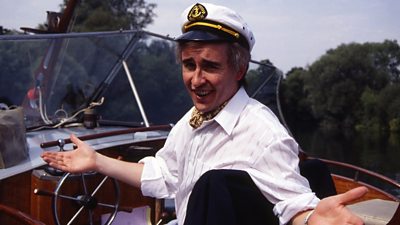
Boats: Working on
A guide to working and filming from boats. -
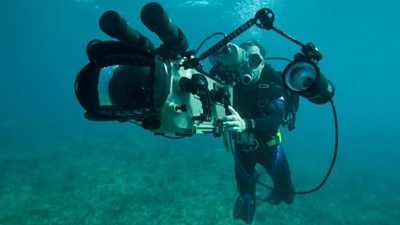
Diving
A Guide to Scuba Diving and free Diving in both open water and pools. -
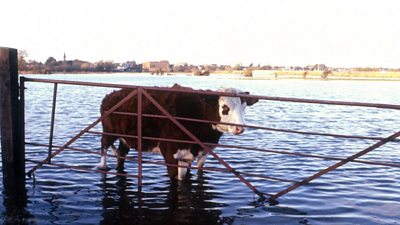
Floods and Coastal Surges
A guide to inland floods. -
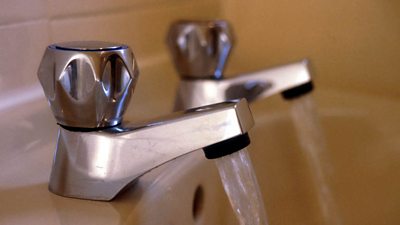
Legionella in Premises: Control of
This guidance provides an overview of how water systems are managed in premises to minimise the risks from the Legionella bacteria. -

Water and Waste Water Management
How to manage water and waste water arising from 成人快手 activities -

Weather
The 成人快手 regularly film and record outside, exposing staff to a variety of adverse and changeable weather conditions during the course of their work. Thunderstorms pose a particular threat to those working at height outdoors, or with raised masts on broadcast vehicles. -
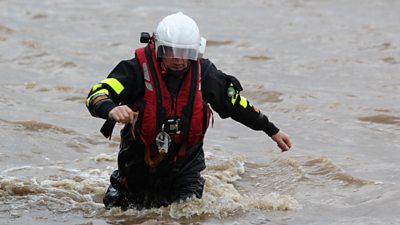
Wearing Your Life Jacket
Life jackets save lives and should be worn where there is a risk of entering the water unintentionally.
More from SSR
-
Your platform to record accidents, risk assessments, assurance monitoring and inspections
-
Safety Equipment Stores
Just one number to call: 020 3614 5155 -
成人快手 Safety Guidelines
An A-Z of 成人快手's Health and Safety Guidelines -
Safety Advice Line: 0370 411 0464 Email: safety@bbc.co.uk
Events guidance - key links:
- Exhibitions
- General Guidance
- Indoor Location Recce Checklist
- Outdoor Location Recce Checklist
- Major Incidents & Emergency Planning
- Marketing and Promotional
- Noise Exposure
- Planning and Management
- Responsibilities
- Responsibilities Form
- Laser Lighting Effects
- Strobe Lighting
- Temporary Stages and Rostra
Health topics - key links:
- (成人快手 network only)
- Contributors Fitness to Participate
- Display Screen Equipment (DSE)
- (成人快手 network only)
- First Aid and Welfare on Location
- International Travel - Risks & Health
- Manual Handling
- Mental Health: 成人快手page
- (成人快手 network only)
- Personal Health and Wellbeing
- Pregnancy
- Psychological Trauma Support & Trauma Risk Management (TRiM)
- Tiredness and Fatigue
- Travel Health Contacts
成人快手 High Risk - key links:
- CBRN and Industrial Spills
- Covert Filming
- Crisis Management and Security Support
- Demonstrations, Protests and Crowds
- Disaster Coverage
- Door Stepping
- (成人快手 network only)
- (成人快手 network only)
- Public Order
- Safety Equipment Stores
成人快手 Journalism - key links:
成人快手 Productions - key links:
- Aerial Filming and Airfields
- Animals: Displaying and handling for performance
- Boats: Working on
- Children and Young People
- Driving
- Electrical Equipment and Systems
- First Aid and Welfare on Location
- Food Safety (Cooking and Catering)
- Remote Location Working
- Roads and Streets: Working by
- Security of Productions on Location
- Stunts
- Tiredness and Fatigue
- Unmanned Aerial Systems (UAS aka Drones)
- Vehicles: Recording in, from and around
- Working at Height: Mobile Elevating Work Platforms
- Working at Height: Tower Scaffolds
成人快手 Radio - key links:
- (成人快手 Network only)
成人快手 Security - key links:
成人快手 Sport - key links:
About this site
This site describes what the 成人快手 does in relation to managing its health, safety and security risks and is intended for those who work directly for the 成人快手.
It is not intended to provide instruction or guidance on how third parties should manage their risks. The 成人快手 cannot be held liable for how this information is interpreted or used by third parties, nor provide any assurance that adopting it would provide any measure of legal compliance. More information
Some links on this site are only accessible when connected to the 成人快手 network
